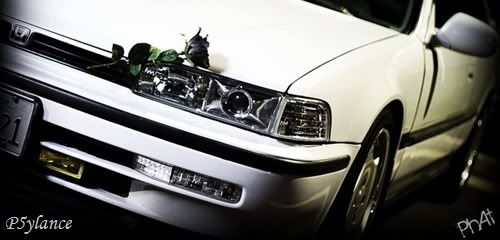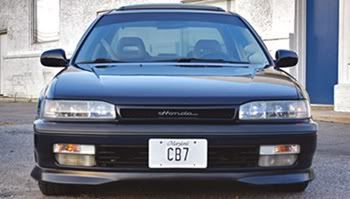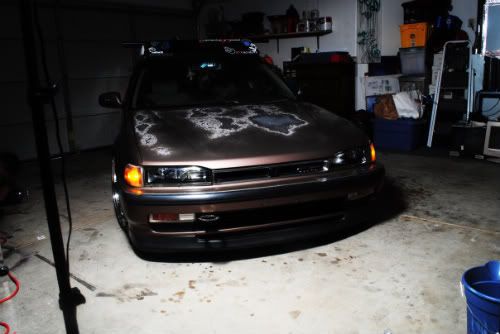-----
This leak was sourced to a multi-point contact area inside the CB cabin, where three pieces of the body are sealed together.
If you think your Accord has this leak, be warned that you're going to have to remove the dashboard and blower motor to seal it up!
NOTE!
Rather than doing a step-by-step write-up, I opted to post photos and an explanation of what you're up against. This isn't an end-all DIY, rather a photo documentary of where I experienced a very bad interior leak. I opted for sealing the problem area with silicone. You may want to seal it a different way.
Dashboard removal and blower motor removal are required. It's assumed that you're already aware of these removal procedures.
If you feel stumped with the thought of removing your dashboard and/or blower motor, below are some links to help get you up to speed. While they may seem difficult, they're actually quite simple procedures - albeit time consuming.
Dashboard Removal Links
Blower Motor Removal Links
Blower Motor Removal/Replacement
If this is your first time removing a dashboard, you may want to set an entire day aside to do this. Keep screws and brackets labeled and organized together in baggies. Believe me, it makes everything so much easier!

Overview:
If your passenger side footwell is damp or soaking wet after it rains, and you don't have a sunroof, this might be the source of your leak. Even if you do have a sunroof and you've eliminated the drainage passages as the source, this may be where your leak is coming from. Failure to patching this leak may result in a rusty floorboard. In addition to a soggy, rusty footwell, the leak can cause the ECU and/or TCU to short out.
Tools Required:
-10mm Deep Socket and Ratchet
(Dashboard removal, Blower Motor removal, ECU removal)
-Flat Head Screwdriver(s)
(Dashboard trim removal, Dashboard removal, clock removal, removal of dashboard bolt covers)
-Philips Head Screwdriver(s)
(Dashboard trim removal, Glove Box removal, Blower Motor housing removal)
-Razor Blade
(To cut open the firewall insulation and expose the leak)
-Rubbing Alcohol or Acetone
(To clean the area before resealing)
-High Strength Interior/Exterior Silicone
(To seal the damn leak!)
Photos:
Listed chronologically with captions.

Remove the Dashboard.
You don't have to remove the cluster or glovebox, but they make it lighter for removal.

Remove the Blower Motor Housing (already removed in photo).
In order to do this, you have to remove the bracket between the Blower Motor and the Evaporator. A few 10mm bolts and Philips screws.

This corner is the target area.
It's a junction for three body panels sealed together, beneath the inner fender and wiper channels.

Close-up.

Another close-up.

Wipe the area down with alcohol or acetone, and seal it up with silicone.
Not the best solution, but hey, this is a 20-year-old daily driver.

Bonus points for sealing the opposite side.
This leak was sourced to a multi-point contact area inside the CB cabin, where three pieces of the body are sealed together.
If you think your Accord has this leak, be warned that you're going to have to remove the dashboard and blower motor to seal it up!
NOTE!
Rather than doing a step-by-step write-up, I opted to post photos and an explanation of what you're up against. This isn't an end-all DIY, rather a photo documentary of where I experienced a very bad interior leak. I opted for sealing the problem area with silicone. You may want to seal it a different way.
Dashboard removal and blower motor removal are required. It's assumed that you're already aware of these removal procedures.
If you feel stumped with the thought of removing your dashboard and/or blower motor, below are some links to help get you up to speed. While they may seem difficult, they're actually quite simple procedures - albeit time consuming.
Dashboard Removal Links
Blower Motor Removal Links
Blower Motor Removal/Replacement
If this is your first time removing a dashboard, you may want to set an entire day aside to do this. Keep screws and brackets labeled and organized together in baggies. Believe me, it makes everything so much easier!

Overview:
If your passenger side footwell is damp or soaking wet after it rains, and you don't have a sunroof, this might be the source of your leak. Even if you do have a sunroof and you've eliminated the drainage passages as the source, this may be where your leak is coming from. Failure to patching this leak may result in a rusty floorboard. In addition to a soggy, rusty footwell, the leak can cause the ECU and/or TCU to short out.
Tools Required:
-10mm Deep Socket and Ratchet
(Dashboard removal, Blower Motor removal, ECU removal)
-Flat Head Screwdriver(s)
(Dashboard trim removal, Dashboard removal, clock removal, removal of dashboard bolt covers)
-Philips Head Screwdriver(s)
(Dashboard trim removal, Glove Box removal, Blower Motor housing removal)
-Razor Blade
(To cut open the firewall insulation and expose the leak)
-Rubbing Alcohol or Acetone
(To clean the area before resealing)
-High Strength Interior/Exterior Silicone
(To seal the damn leak!)
Photos:
Listed chronologically with captions.

Remove the Dashboard.
You don't have to remove the cluster or glovebox, but they make it lighter for removal.

Remove the Blower Motor Housing (already removed in photo).
In order to do this, you have to remove the bracket between the Blower Motor and the Evaporator. A few 10mm bolts and Philips screws.

This corner is the target area.
It's a junction for three body panels sealed together, beneath the inner fender and wiper channels.

Close-up.

Another close-up.

Wipe the area down with alcohol or acetone, and seal it up with silicone.
Not the best solution, but hey, this is a 20-year-old daily driver.

Bonus points for sealing the opposite side.



 nice to know the source now!
nice to know the source now!





Comment